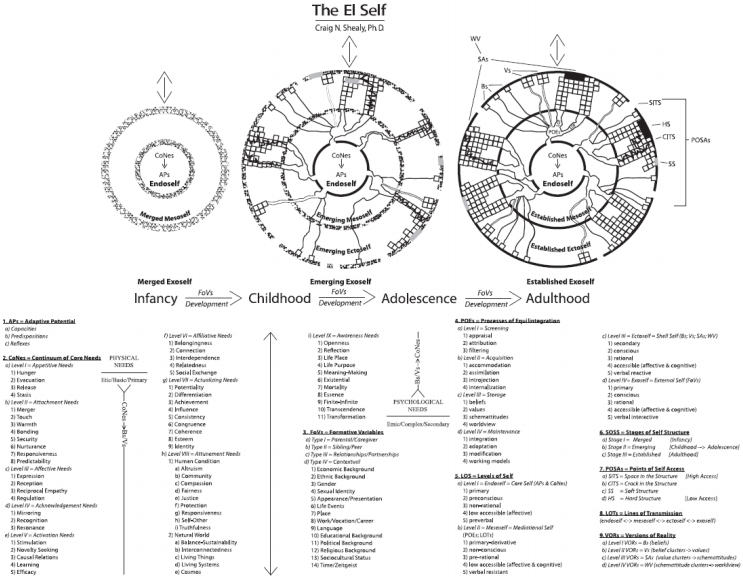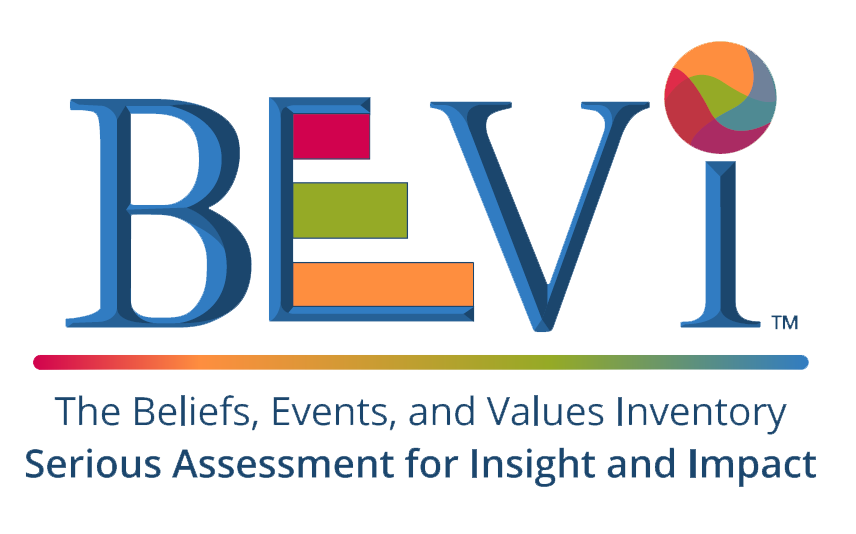Equilintegration (El) Theory
The BEVI is grounded in mature and robust theoretical and empirical literature, including a comprehensive review of research related to the constructs assessed by this instrument. This framework brings together Equilintegration (EI) Theory and the EI Self, which together comprise the EI Model.
Equilintegration or EI Theory draws upon a wide range of theoretical, empirical, and applied perspectives to “explain the processes by which beliefs, values, and worldviews are acquired and maintained, why their alteration is typically resisted, and how and under what circumstances their modification occurs” (Shealy, 2004, p. 1075).
The EI Self illustrates how interactions between our core needs (e.g., for attachment, affiliation) and formative variables (e.g., caregiver, culture) are internalized over the course of development and across the lifespan, which results in beliefs and values about self, others, and the world.

To understand the EI Model more deeply, here is a six-point summary of EI Theory Principles.
- Etiological. Our beliefs and values are not necessarily correct or superior because they are ours. Rather, the beliefs and values we hold to be relatively good and true or bad and false are culminating artifacts of an interaction among (a) adaptive potential (e.g., genetic predispositions), (b) core need (e.g., attachment, affiliation), (c) formative variables (e.g., caregivers, life history), and (d) extant contingencies (e.g., that which is and is not reinforced in a specific time and place).
- Mediational. Beliefs and values are central mediating processes for behavior at individual and societal levels, but they may or may not be “known” (i.e., may be implicit or nonconscious), and are not necessarily rational or logically grounded.
- Constitutive. Although that which is believed and valued may not transcend a given time or place, the human capacity and need for an organizing worldview is an etic derivative of the self. Thus, although the content of our beliefs and values may vary as a function of what is available for acquisition, the processes (e.g., developmental, affective, attributional) by which beliefs and values are acquired are determined by constitutive aspects of the self (i.e., formative, regulatory, contextual, perceptual, experiential, and integrative dimensions).
- Explicative. When combined with sufficient knowledge about important life experiences and events, belief and value statements often provide (a) a great deal of information about the hypothetical structure and organization of personality or “self” and (b) a relatively accessible point of entry to issues and phenomena that are meaningful in a wide range of settings and contexts.
- Resistant. Although they can and do change, beliefs and values are not easily modified because they represent the culmination of an interaction among (a) core needs (e.g., attachment, affiliation), (b) mediational processes (e.g., attribution, filtering), and (c) external contingencies (e.g., that which is reinforced), which are codified (ultimately at a physiological level) in personality and “self.”
- Transformational. Because human beings balance the desire for equilibrium and stasis against the inevitable internal and external pressures for development and growth, changing beliefs and values often means accessing underlying needs and reconfiguring their alignment to beliefs and values, which changes self-structure (and vice versa); this process of understanding how self-structure came to inevitably involve an emotionally charged and not-always-conscious examination of how one’s needs may be better met with attendant implications for what one believes and values about self, others, and the world at large. Ultimately, whether or not and the degree to which beliefs and values “change” depends upon the “7Ds” (i.e., duration, difference, depth, determine, design, deliver, debrief).
